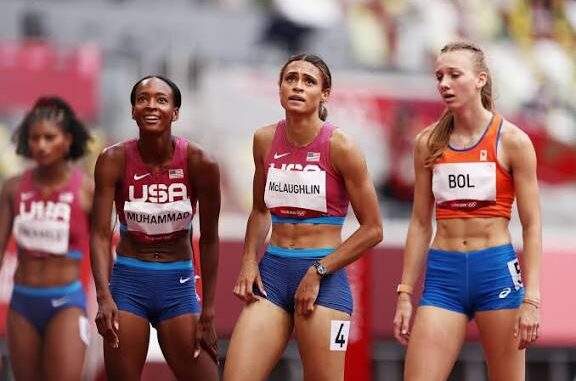
The women’s 400m hurdles has become one of the most electrifying events in track and field, defined by raw speed, endurance, and flawless technique. Over the past few seasons, Dutch superstar Femke Bol has dominated the event with her poise and precision, shattering records and setting new standards for excellence. But with Bol reportedly set to miss the upcoming season due to an injury and her focus shifting temporarily toward recovery, the big question looms: who carries the torch now? The absence of Bol opens a fascinating window for a new hierarchy to emerge — and names like Sydney McLaughlin-Levrone and Dalilah Muhammad immediately rise to the forefront.
Sydney McLaughlin-Levrone remains the undisputed queen of the 400m hurdles when she’s at her best. The American prodigy has rewritten the record books, becoming the first woman to break the 52-second barrier and later astonishing the world with her 50.68 world record at the 2022 World Championships in Eugene. What sets McLaughlin-Levrone apart is not only her sheer speed but also her ability to make the event look effortless. Her stride pattern, rhythm, and composure over hurdles give her an unmatched edge. However, her recent ventures into the flat 400m and her selective competition schedule have left fans wondering whether she will fully commit to the hurdles again. If she does, and with Bol out of the picture, Sydney would instantly reclaim her dominance.
On the other hand, Dalilah Muhammad — the veteran of the field — remains a force of consistency and experience. A former Olympic champion and world record holder herself, Muhammad’s legacy is deeply tied to the modern evolution of the event. Even at 35, she continues to demonstrate elite fitness and tactical mastery. Her resilience has been remarkable, especially after battling injuries and competing against a younger generation of stars. Should McLaughlin-Levrone choose to focus on other events, Muhammad could see a golden opportunity to reassert herself as the premier hurdler in Bol’s absence.
Beyond the American duo, there’s also a rising wave of young talents eager to capitalize on this transitional moment. Athletes like Shamier Little, Britton Wilson, and Anna Cockrell have all shown flashes of brilliance and could use the 2025 season to step firmly into global contention. Little’s aggressive running style, Wilson’s range across 400m and hurdles, and Cockrell’s steady improvement make them intriguing prospects for podium finishes. Without Bol setting the pace, the field may finally feel more open — a return to tighter, more unpredictable races where experience and composure matter as much as raw speed.
Globally, the likes of Rushell Clayton and Andrenette Knight from Jamaica, and Viivi Lehikoinen from Finland, have also been climbing steadily in the rankings. For them, Bol’s absence could be the catalyst that propels them from finalists to medal contenders.
Ultimately, the future of the women’s 400m hurdles looks both uncertain and exciting. Femke Bol’s temporary exit leaves a void, but it also revives rivalries and opportunities that had been overshadowed by her dominance. If Sydney McLaughlin-Levrone returns to the event with full focus, she could reaffirm her place as one of the greatest ever. If not, Dalilah Muhammad and the emerging generation stand ready to define a new era.
One thing is certain: even without Bol, the women’s 400m hurdles remains a showcase of power, grace, and relentless competition — and the world will be watching to see who seize
s the moment.
Be the first to comment